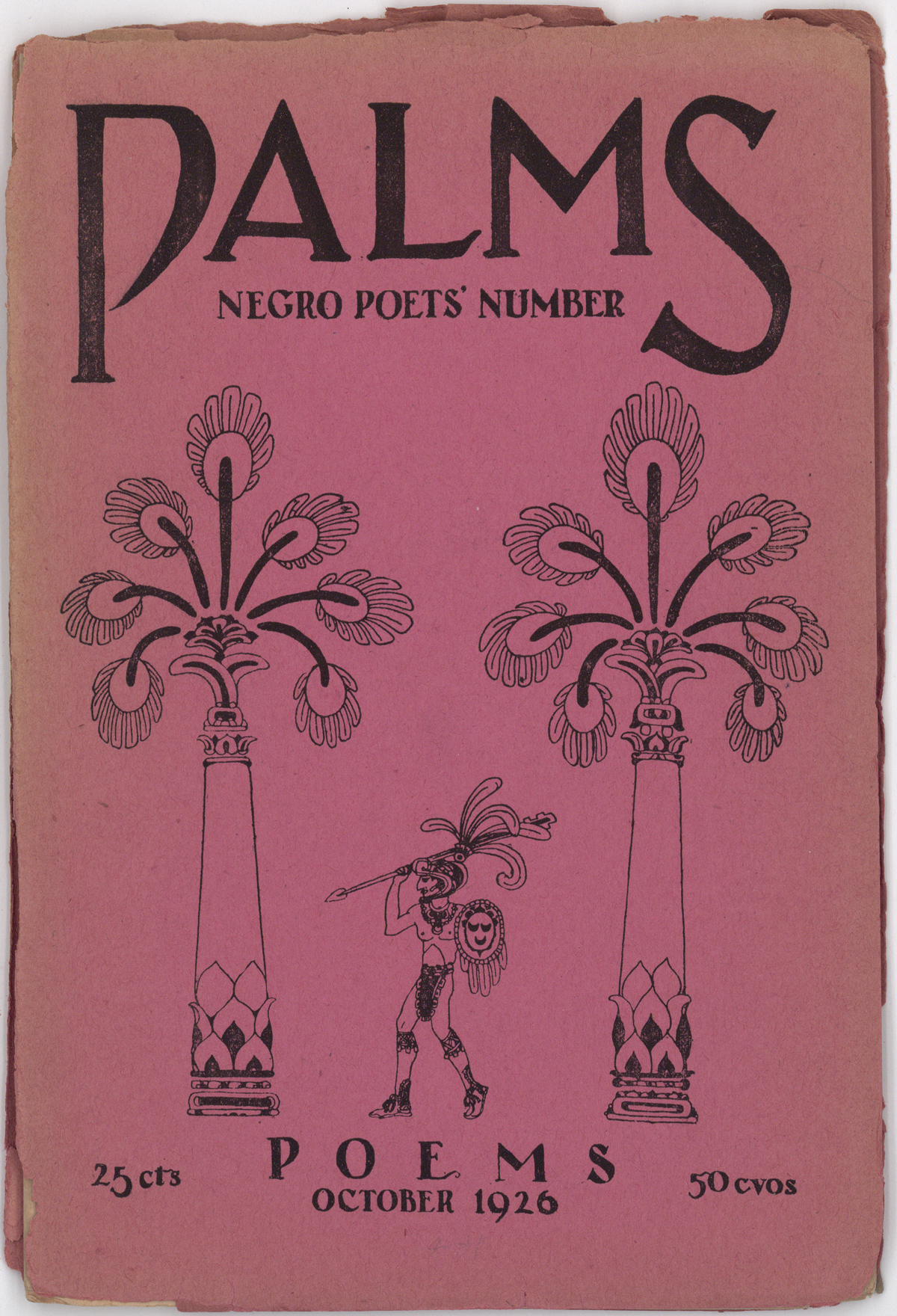
This is the second of a three-part series of posts highlighting the influence and work of Countée Cullen, a poet and editor during the Harlem Renaissance.
In the mid-1920s anthologies of African American writing found a receptive audience in the United States and abroad. The poetry magazine Palms embraced the trend and invited Countée Cullen to serve as guest editor of its “Negro Poets’ Number.” The announcement of the forthcoming issue appeared in the January 1926 issue, the same in which John Weatherwax reviewed Cullen’s Color.

Though Cullen expressed concern about his editorial abilities, his correspondence with Palms editor Idella Purnell from December 1925 to October 1926 shows him to be a thoughtful and considerate editor. He asked Purnell to ensure that at least one poem from all of the poets whose work he had submitted be included in the final volume, “in brief, I should not care, if it can be avoided, to have any poet whose work I accepted absolutely ruled out.” Cullen also asked Purnell to notify him if any individual poems were rejected so that the poets might submit the works elsewhere.
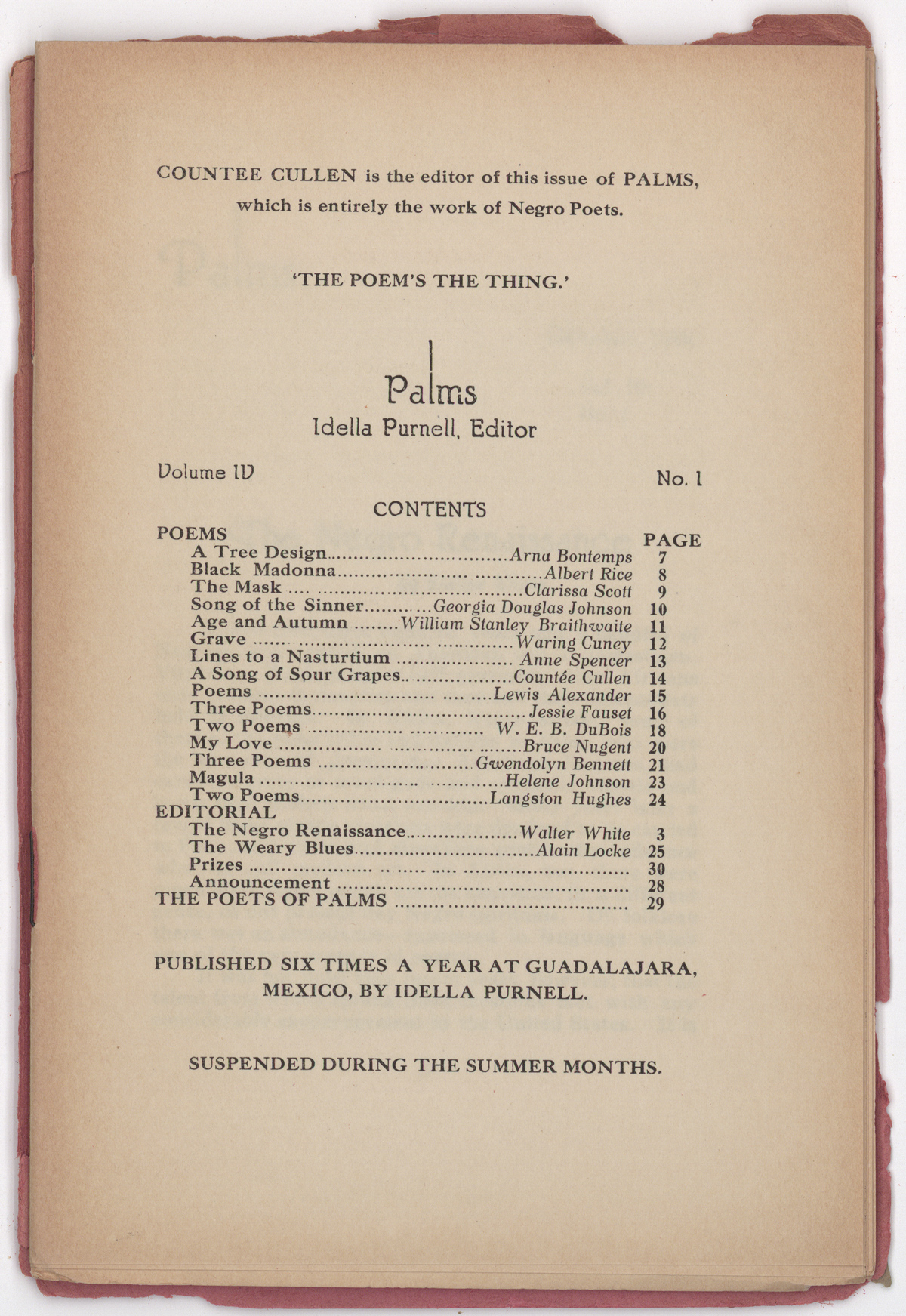
Purnell consented to Cullen’s wishes, and the issue featured poetry by Lewis Alexander, Gwendolyn Bennett, Arna Bontemps, William Stanley Braithwaite, Cullen, Waring Cuney, W.E.B. Du Bois, Jessie Fauset, Langston Hughes, Georgia Douglas Johnson, Helene Johnson, Richard Bruce Nugent, Albert Rice, Clarissa Scott, and Anne Spencer. Purnell had suggested that Cullen provide readers with an introduction to the special issue, and he enlisted Walter White, novelist and eventual leader of the NAACP (1931–1935), to do so. The issue also featured Alain Locke’s review of Langston Hughes’s first published poetry collection, The Weary Blues (1926).
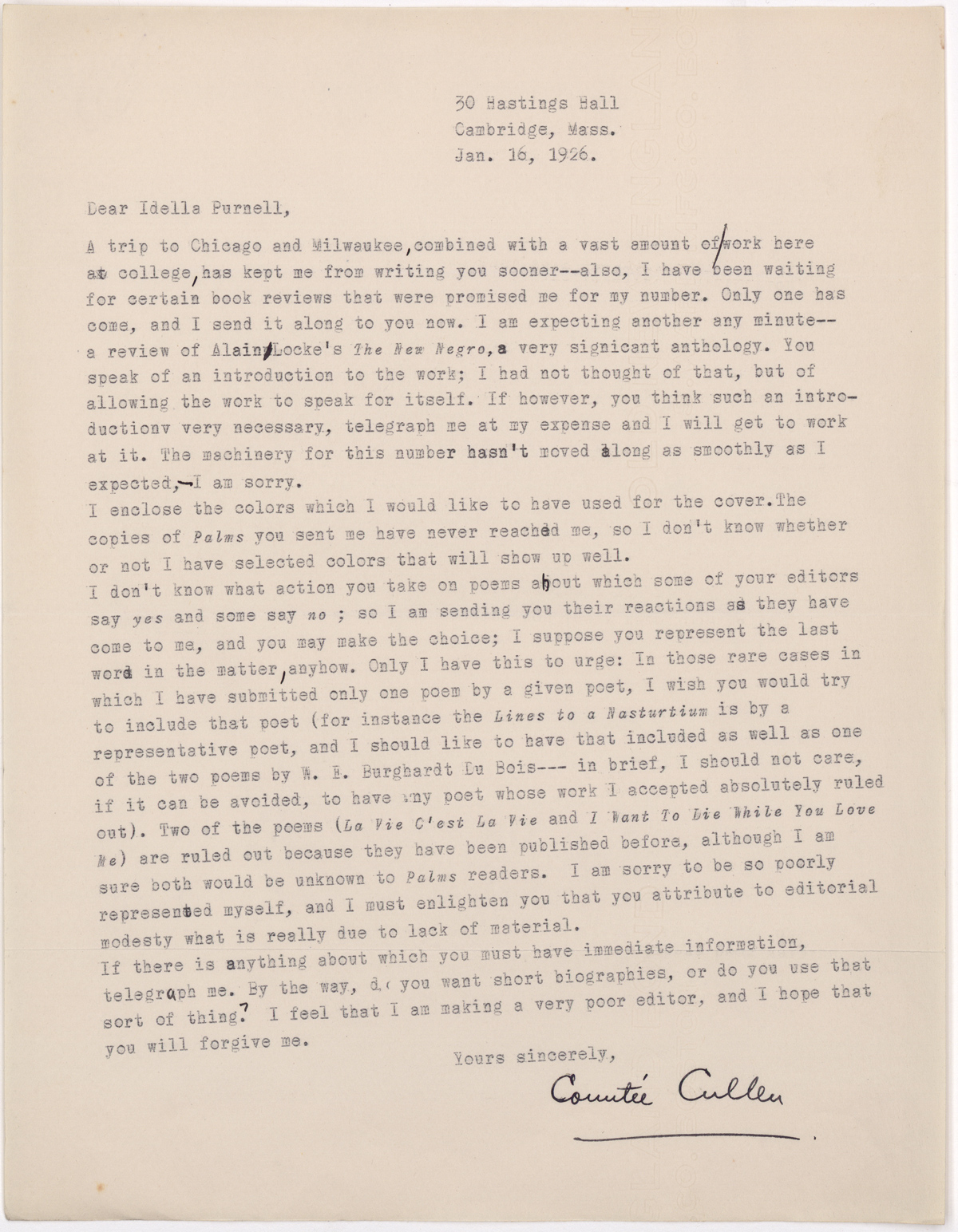
Cullen and Purnell were both pleased with the issue, as was its readership, which soon purchased all of the available copies. In a letter to Purnell, Cullen expressed his hope that the special issue might become an annual feature of the magazine. In spite of the success of its “Negro Poets’ Number,” Palms did not produce another issue devoted to African American poets.
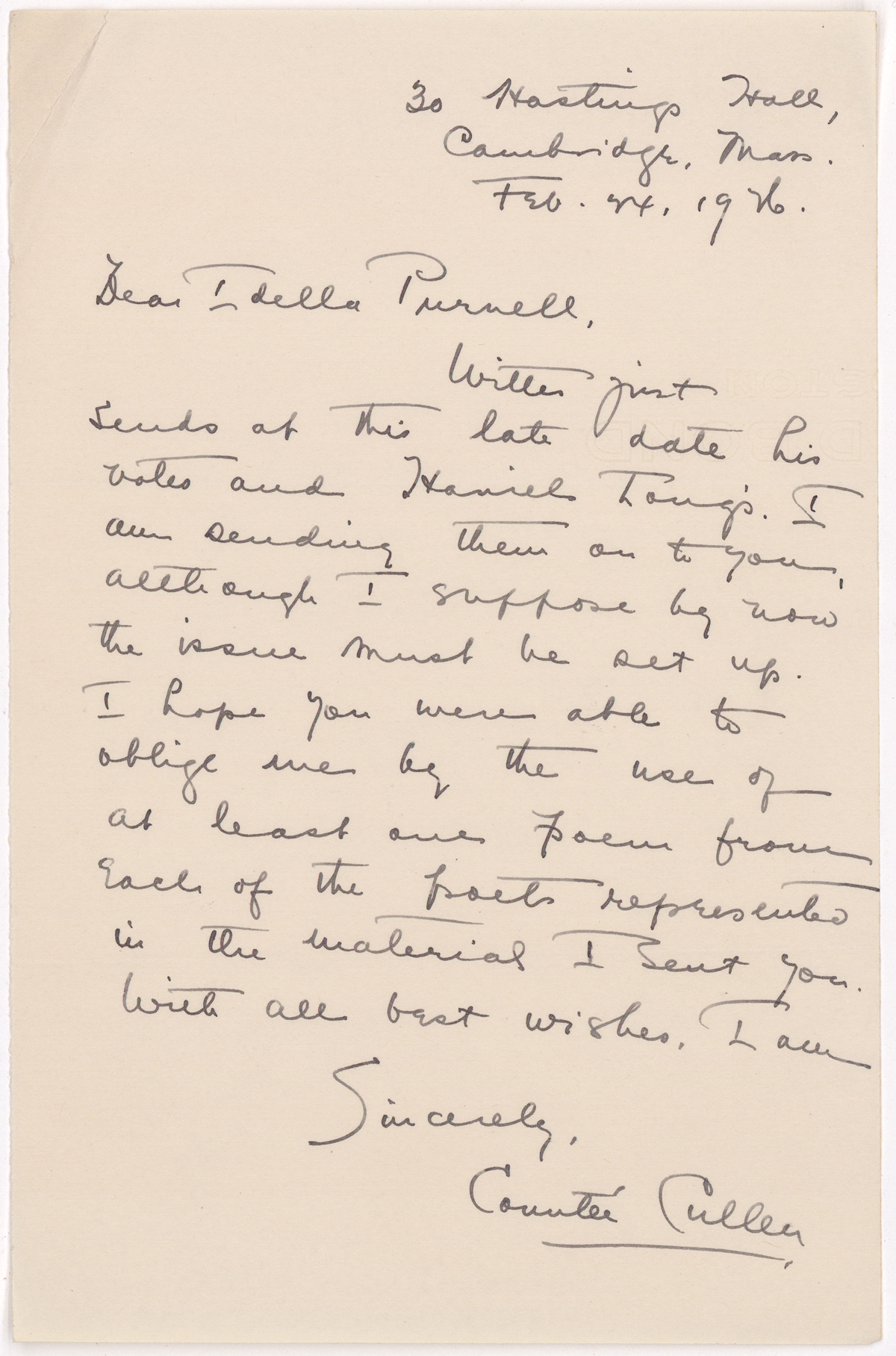
Cullen, however, was not through with his editorial work. He informed Purnell that he would be taking on the duties of literary editor at the National Urban League’s Opportunity journal; and, inspired by the success of Palms, would soon produce his own anthology for Harper & Brothers.
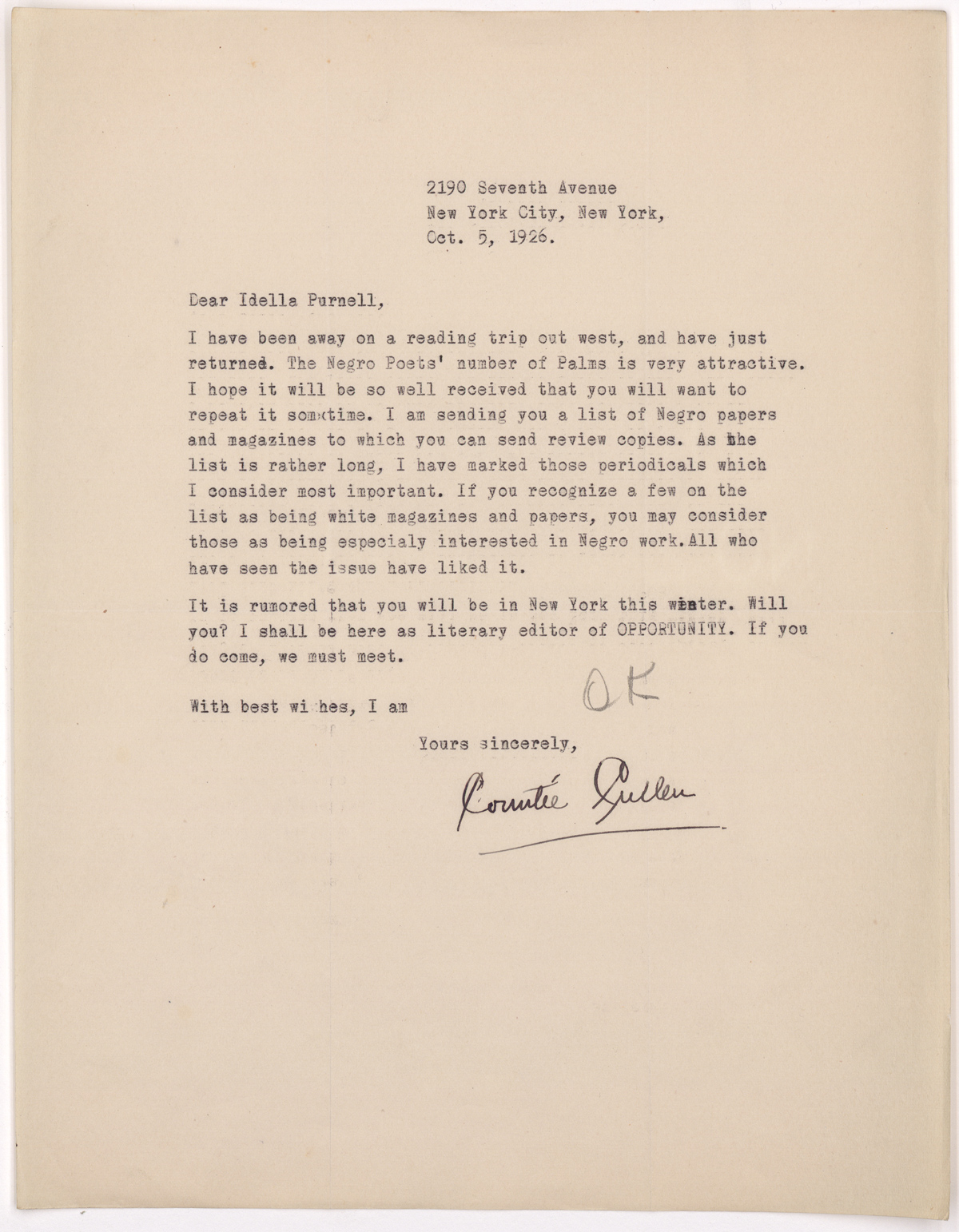
Materials related to Countée Cullen and his work are in the Ransom Center’s book collection as well as the Idella Purnell Stone Personal Papers and Records of Palms Magazine and other manuscript collections.